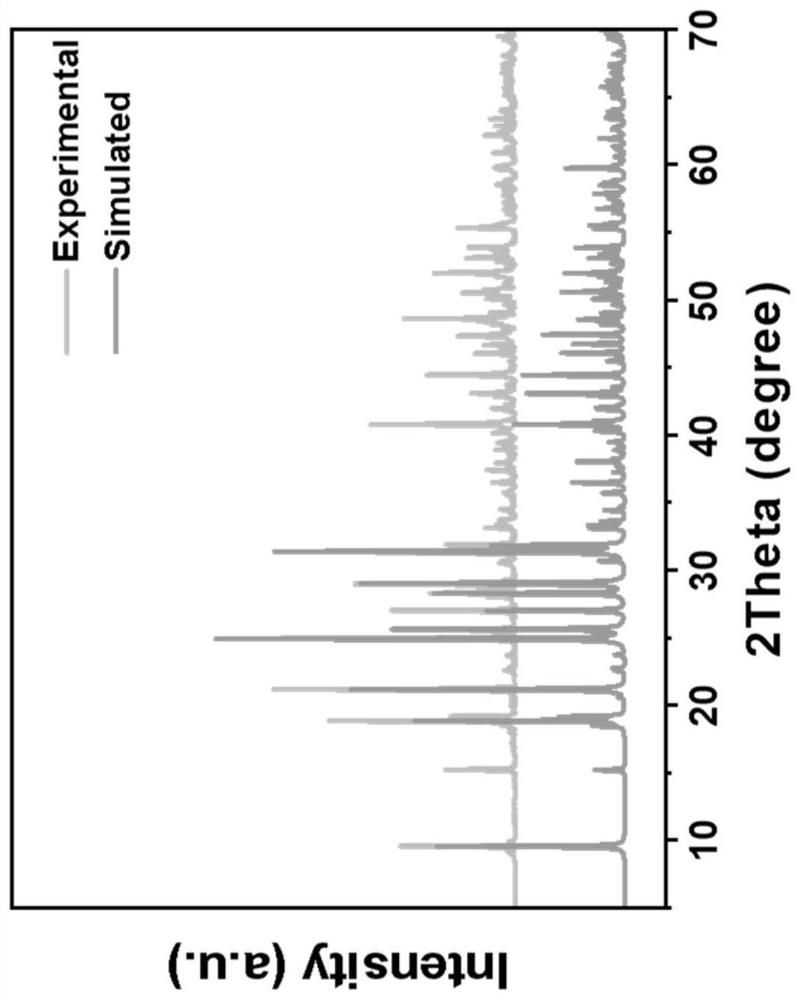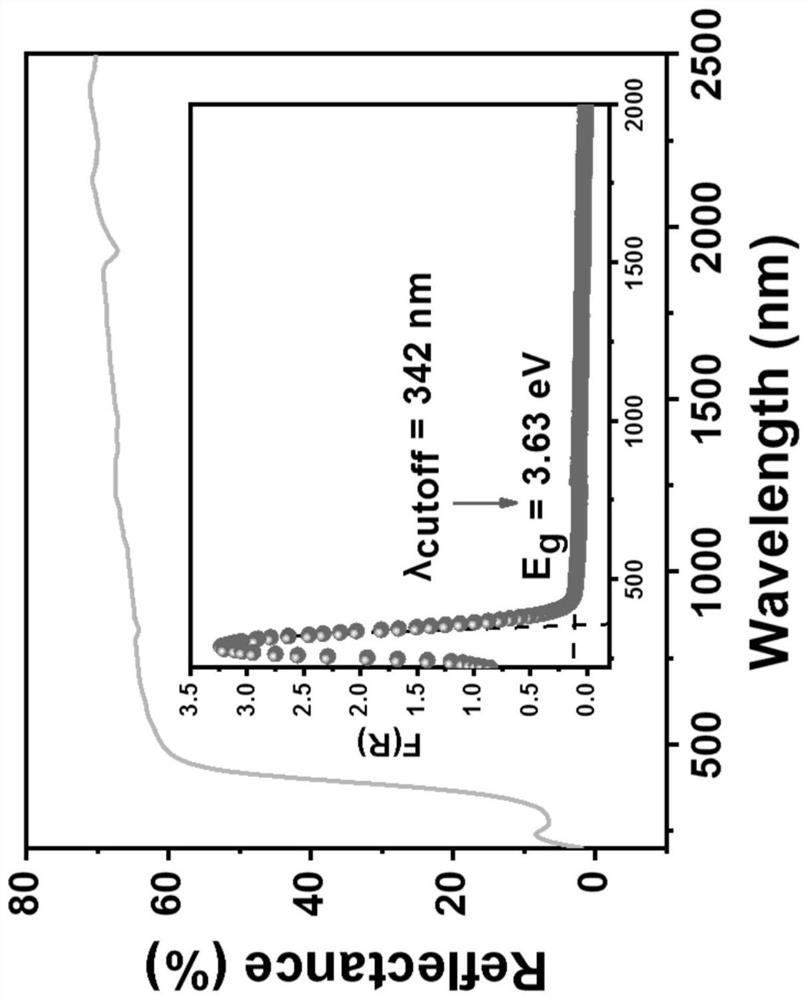Rubidium molybdenum fluorine tellurite second-order nonlinear optical crystal material and preparation thereof, and application of rubidium molybdenum fluorine tellurite second-order nonlinear optical crystal material in laser frequency conversion
A second-order nonlinear, molybdenum fluorine tellurite technology, applied in nonlinear optics, polycrystalline material growth, optics, etc., can solve the problem of lack of infrared nonlinear optical crystal materials, etc., to achieve phase matching, mild conditions, simple method effect
- Summary
- Abstract
- Description
- Claims
- Application Information
AI Technical Summary
Problems solved by technology
Method used
Image
Examples
Embodiment 1
[0031] Hydrothermal synthesis of samples
[0032] Mix molybdenum source, rubidium source, tellurium source, hydrofluoric acid and water in a certain proportion to form the starting material, seal it in a hydrothermal reaction kettle with a polytetrafluoroethylene liner, raise the temperature to the crystallization temperature, and keep the temperature for a period of time Finally, the temperature of the reaction system is slowly lowered to room temperature at a certain rate, filtered and washed, and colorless block rubidium molybdenum fluorotellurite crystals can be obtained.
[0033] The relationship between the types and proportions of raw materials in the initial mixture, crystallization temperature, crystallization time and sample number is shown in Table 1.
[0034] Table 1 Correspondence between samples, raw materials and synthesis conditions
[0035]
[0036]
Embodiment 2
[0038] Crystal structure analysis
[0039] The structures of samples 1# to 6# were analyzed by single crystal X-ray diffraction and powder X-ray diffraction.
[0040]The single crystal X-ray diffraction test was carried out on a D8 VENTURE CMOS X-type X-ray single crystal diffractometer from Bruker, Germany. The crystal size is 0.22×0.11×0.05mm 3 ; The data collection temperature is 293K, and the diffraction light source is Mo-Kα ray monochromated by graphite The scanning method is ω; the data is processed by the Multi-Scan method for absorption correction. The structural analysis was completed using the SHELXTL-2017 program package; the position of the heavy atoms was determined by the direct method, and the coordinates of the remaining atoms were obtained by the difference Fourier synthesis method; 2 The full-matrix least-squares method was used to refine all atomic coordinates and anisotropic thermal parameters.
[0041] The powder X-ray diffraction test was carried ou...
Embodiment 3
[0046] UV Diffuse Reflectance Spectroscopy Test
[0047] The diffuse reflection absorption spectrum test of sample 1# was carried out on a Cary 5000 UV-Vis-NIR spectrophotometer of Agilent Corporation, USA. The result is as image 3 shown by image 3 It can be seen that the compound has no significant absorption in the range of 342nm to 2500nm. The compound has a wide optical transmission range and an optical band gap of 3.63eV.
PUM
| Property | Measurement | Unit |
|---|---|---|
| thermal stability | aaaaa | aaaaa |
Abstract
Description
Claims
Application Information
 Login to View More
Login to View More - R&D
- Intellectual Property
- Life Sciences
- Materials
- Tech Scout
- Unparalleled Data Quality
- Higher Quality Content
- 60% Fewer Hallucinations
Browse by: Latest US Patents, China's latest patents, Technical Efficacy Thesaurus, Application Domain, Technology Topic, Popular Technical Reports.
© 2025 PatSnap. All rights reserved.Legal|Privacy policy|Modern Slavery Act Transparency Statement|Sitemap|About US| Contact US: help@patsnap.com



